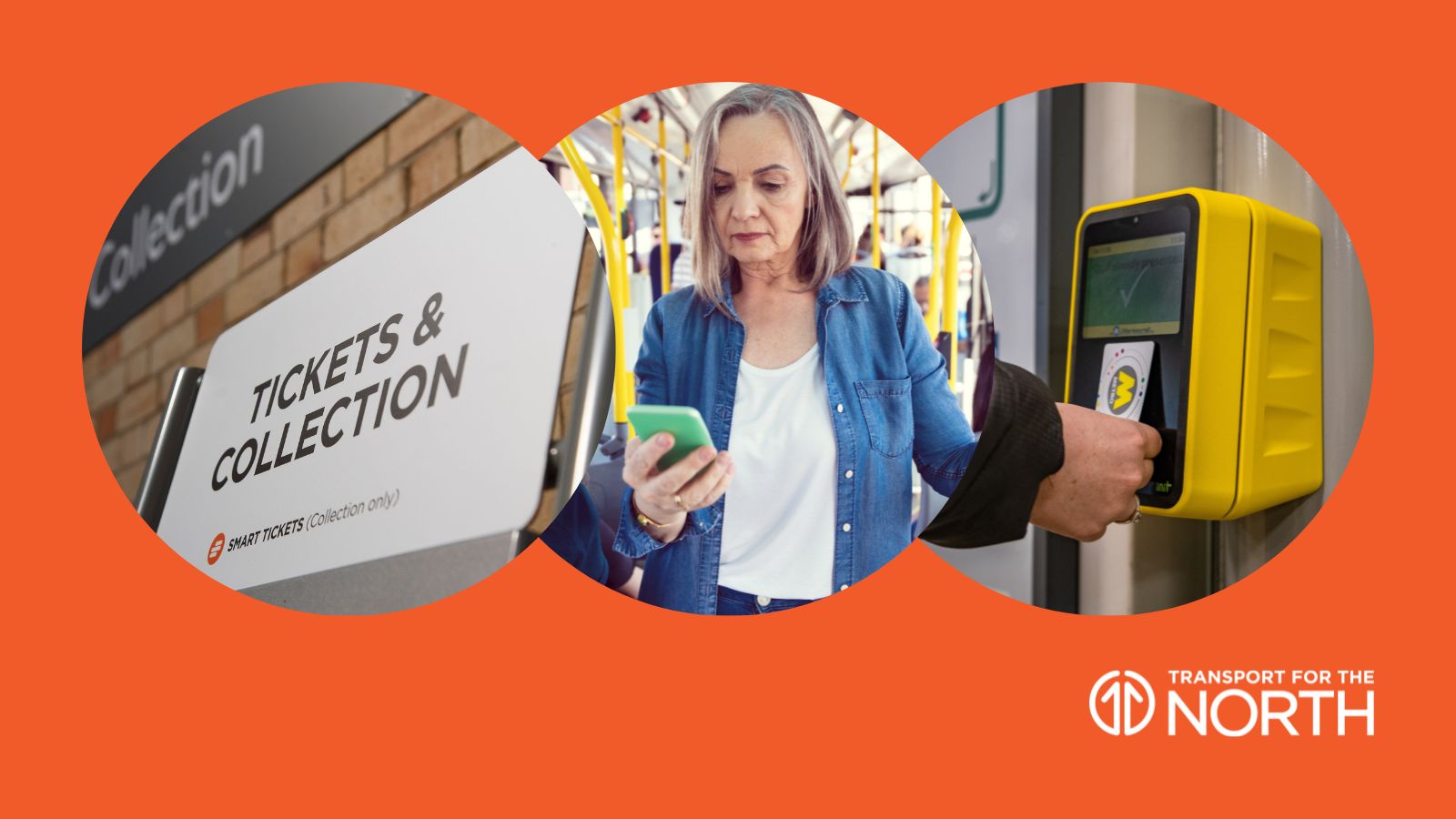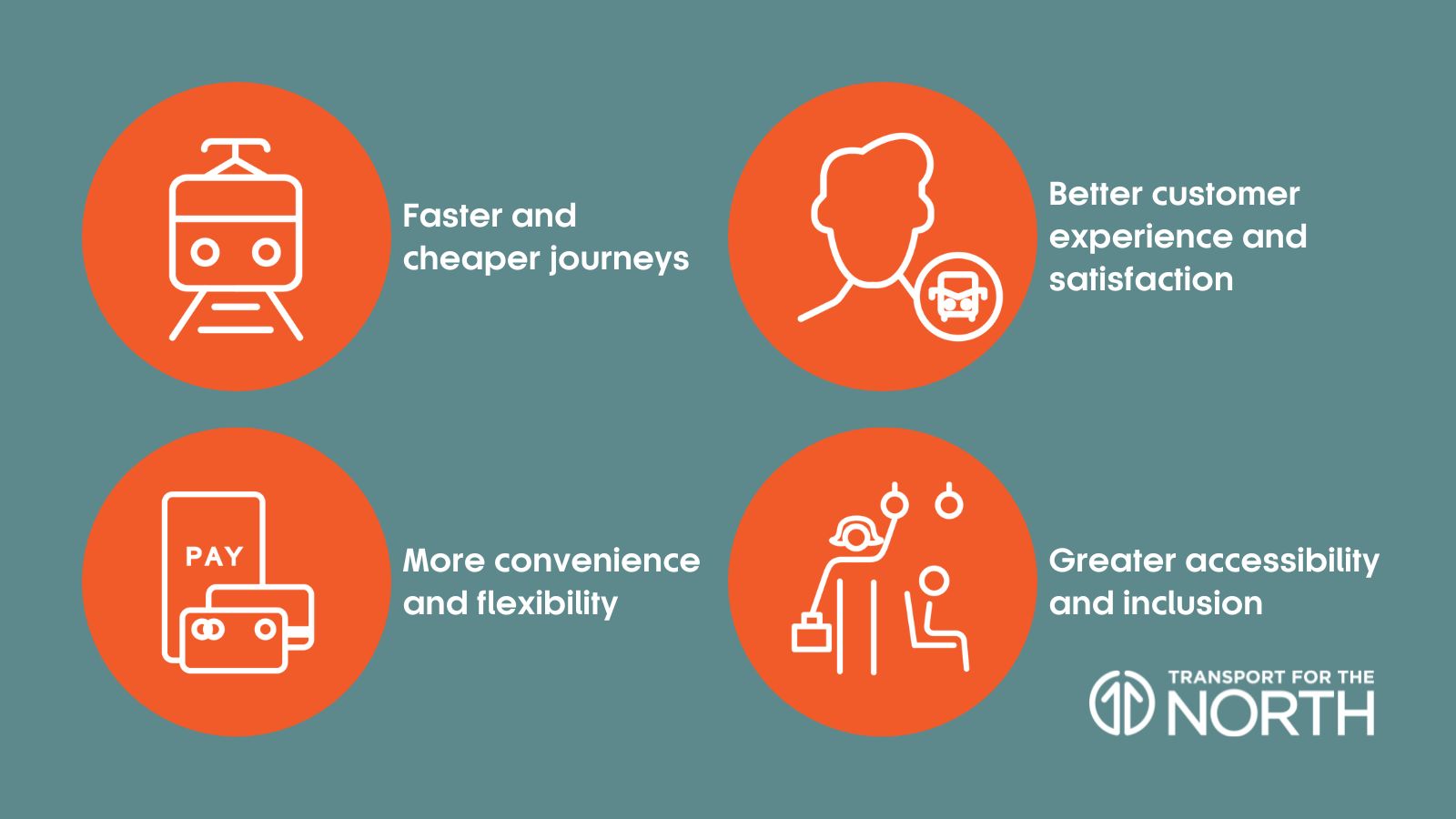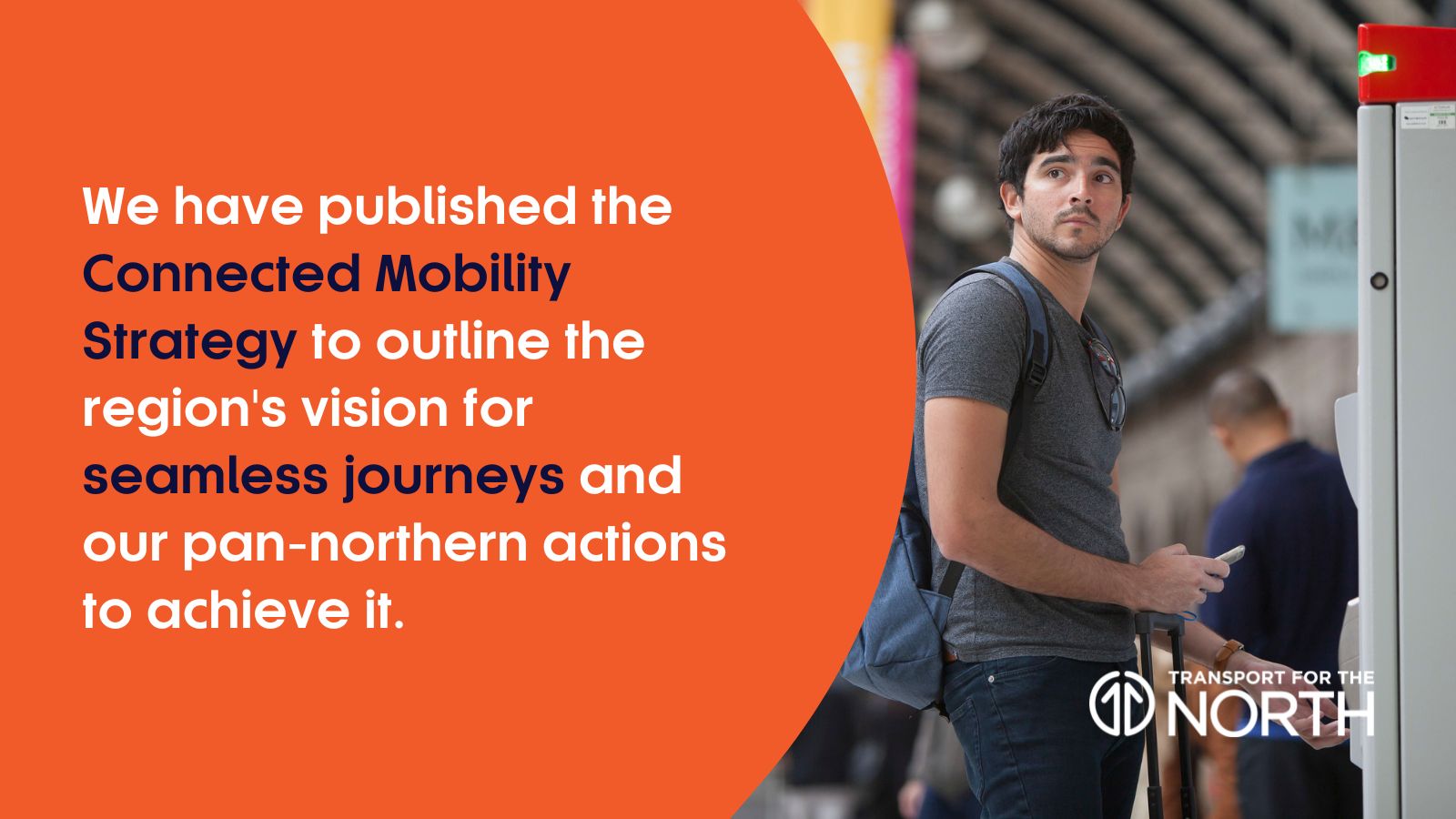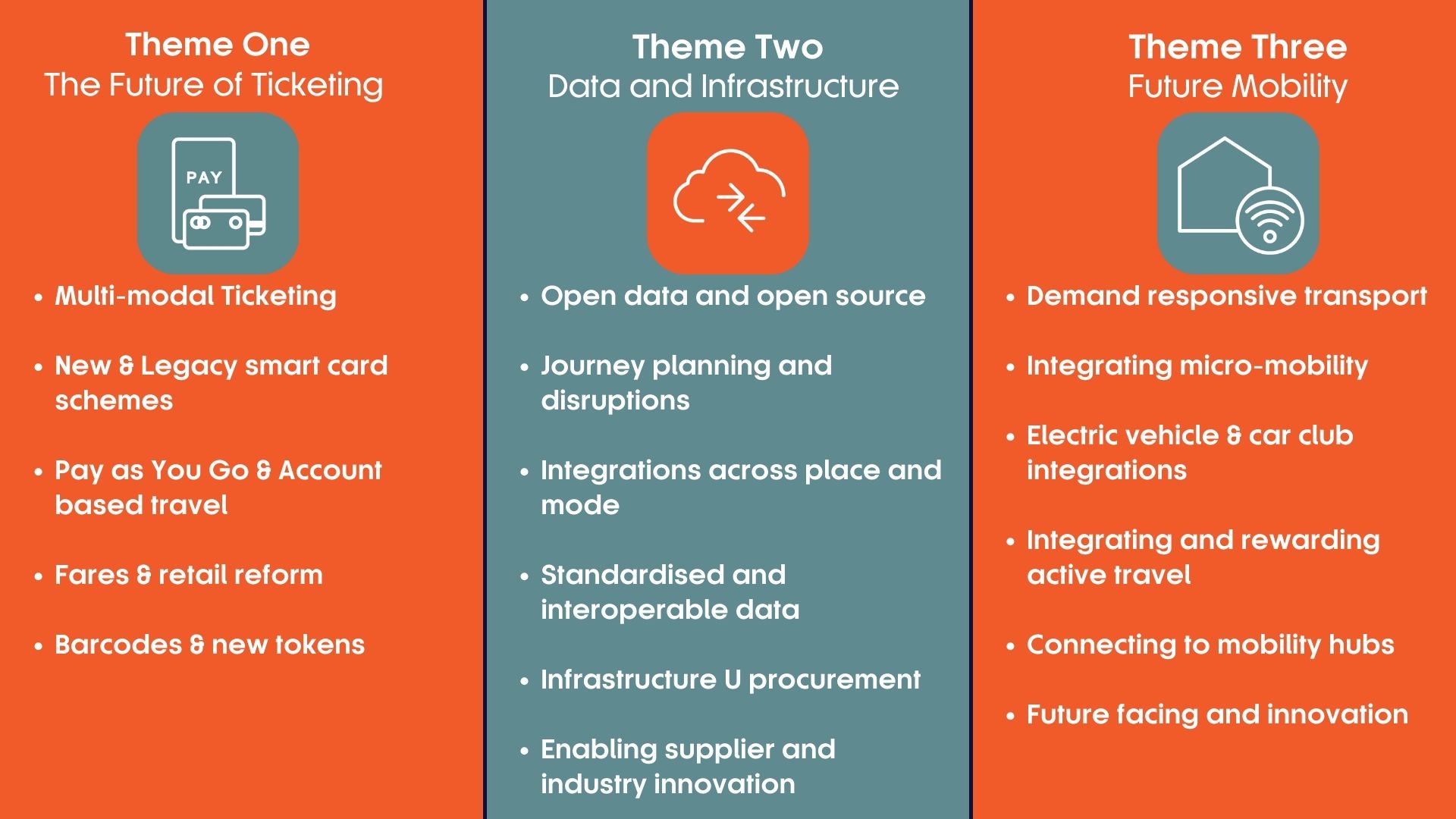Our Connected Mobility Strategy articulates the North’s vision for a new era of simple and seamless public transport journeys across the North.
It defines clear outcomes across contactless payments, real time service information, journey planning tools and a simplified pricing structure for existing and new modes of travel.
Here Matt Smallwood, the author of the Strategy and a leading expert in transport ticketing and integrated transport systems, sets out why we’ve created this strategy, what it means for the North and how we plan to work together across the North’s authorities, innovators and wider industry to achieve our shared ambition.

Connected mobility is the concept of enabling different transport modes to share information and offer seamless services to passengers. This enhances the reliability and affordability of travel, as well as the convenience and satisfaction of customers.
By integrating payment methods, ticketing, and journey planning, networks can cater to the diverse needs and preferences of travellers.
However, the transport industry still faces many challenges in harnessing the potential of connected mobility. Despite the prediction that 95% of the population will use smartphones by 2025, according to uSwitch, there are still gaps in technical access and literacy among passengers. Moreover, innovations in transport have often been hindered by mode-specific or geographical barriers, resulting in fragmented apps and systems.
The pandemic has created an opportunity to rethink and reshape the future of travel. With changes in travel patterns, such as less commuting and more leisure trips, there is a need for more flexible and personalised transport options. Additionally, there is a growing demand for contactless and mobile-based payments, which can simplify and secure the payment process. By embracing these changes, we can offer a more enjoyable and efficient travel experience for everyone.

Connected mobility is not only good for passengers, but also for the society and the economy. Some of the wider benefits are:

Transport for the North will play a key role in supporting more connected mobility in the region. Rather than pursuing a single technical solution or duplicating existing efforts, we are defining the North’s vision for better connected journeys and the value they bring to passengers. We also work with our partners, industry and government to build on existing successes, target investments more effectively, and secure collaborative funding to deliver shared ambitions.
We have published the Connected Mobility Strategy to outline the region’s vision for seamless journeys and our pan-northern actions to achieve it. The strategy goes beyond ticketing and covers the infrastructure and innovations needed for more connected journeys. It shows what we and our partners will do to improve journey planning, integrate new modes of transport, and put passengers first in tech innovation. It is not just a document with vague goals. It sets out the outcomes that we and the North will work together to achieve.

The strategy identifies 30 outcomes that are essential for the North to improve passenger and authority benefits. These outcomes are grouped into three themes:
The Future of Ticketing: How technology can transform travel payments
The Future of Ticketing theme explores how ticketing systems can evolve and integrate with new technologies. This covers mobile ticketing, contactless payments, and fares reform to boost patronage, growth, and affordability. The goal is to make travel payments seamless, convenient, and affordable for everyone on the transport network.
Data & Infrastructure: How data and infrastructure can create seamless journeys
The Data & Infrastructure theme explores how data and infrastructure can enable seamless journeys for passengers. This includes using real-time data to help passengers plan and adjust their trips, integrating different transport modes to offer more choices and convenience, and implementing smart infrastructure such as traffic sensors and intelligent transport systems to optimise network confidence. It also tackles connectivity gaps, as Ofcom reports 14-21% of B-roads lack 4G, which could limit the delivery of real-time transport.
Future Mobility: How transport can innovate and adapt
The Future Mobility theme explores how transport can meet the changing needs and expectations of passengers. This covers new modes of transport, such as electric and autonomous vehicles, that can lower emissions and increase safety. It also covers on-demand and responsive transport services, such as ride-hailing and micro-mobility, that can offer more convenience and flexibility. Moreover, it covers a more integrated and efficient transport system, that can coordinate different modes of transport and deliver more holistic services for passengers.
Click the thumbnail of the cover below to read the document in full: